Are you looking to ditch commercial detergent and toxic chemicals and use a natural soap instead? This simple powder laundry detergent is for you. It’s made with simple ingredients, takes just 5 minutes, and is the hardest working homemade detergent-fighting stains and odors like a champ.
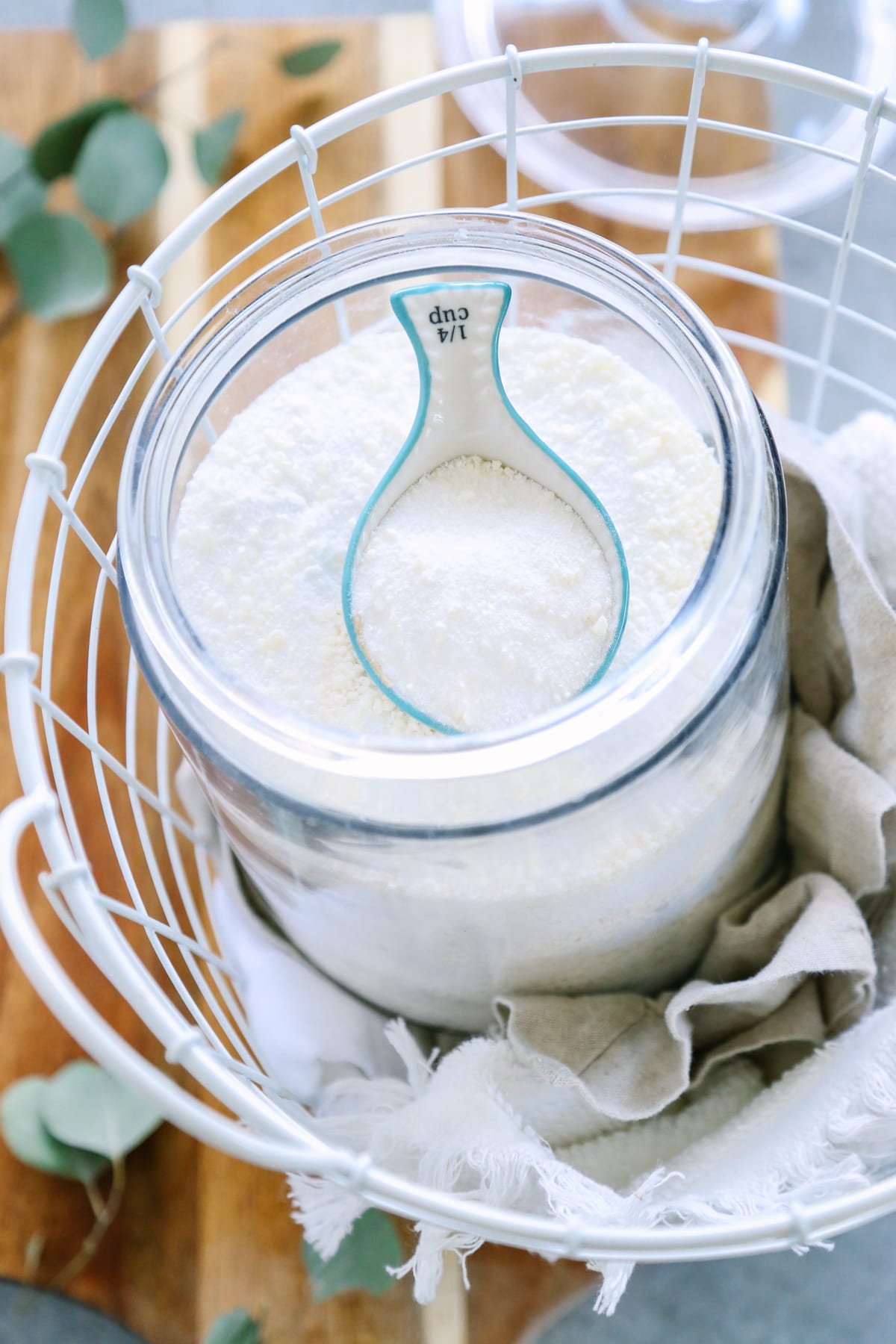
Want to Save This Article?
Enter your email & I’ll send it straight to your inbox. And you’ll get new recipes & tips each week.
I’ve been using this powder laundry detergent recipe and DIY liquid detergent for over 11 years, and my laundry always smells and feels fantastic.
Homemade Powder Laundry Detergent Benefits
- Natural Laundry Soap Recipe – No harsh chemicals in this detergent. You only need 2 bars of natural soap, borax, and washing soda.
- Save Money – Not only is making your detergent a great way to reduce toxic chemicals, it’s also a great way to save money.
- Clean Laundry – The natural ingredients clean clothes, eliminate odors, and even remove tough stains.
- Quick & Easy – This recipe takes about 5 minutes to make.
- 56 Loads of Laundry – Plenty of detergent for a family.
- 12-Month Shelf Life – Store the detergent in a container for up to a year.
Before You Get Started: What You’ll Need
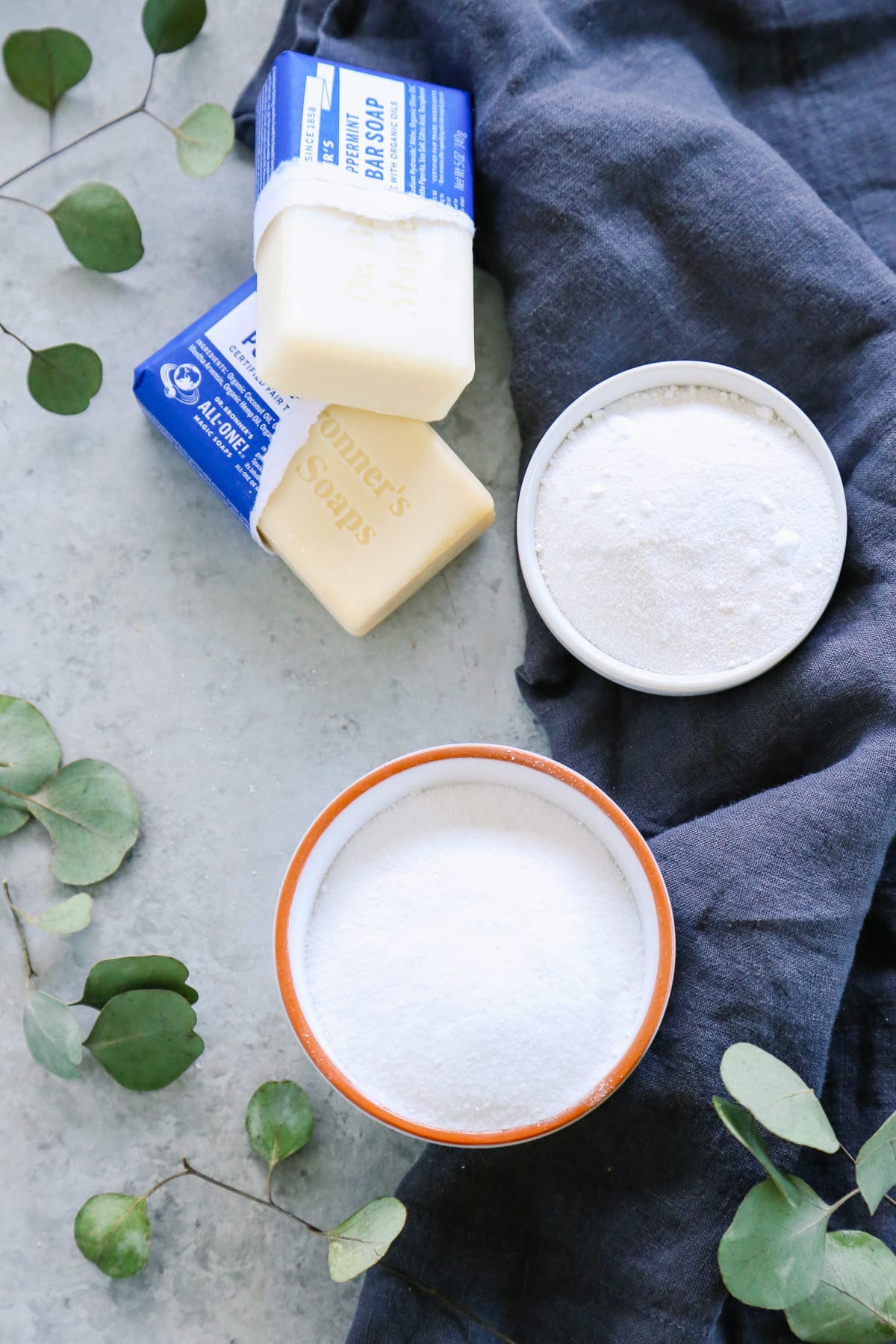
Ingredients
- 2 5-oz castile soap bars – Cleans, removes dirt and grime, fights against stains, and freshens. Castile soap is a plant-based, concentrated soap. It’s the best option for making your own laundry detergent. Dr. Bronner’s brand is easy to find in the grocery store (body/beauty aisle) and has over 20 uses. I also use castile soap to make liquid laundry detergent.
- 3 cups washing soda – Boosts the power and effectiveness of the soap, helping to remove stains and eliminate odors. Also called “soda ash.”
- 2 cups borax – Laundry softener and water conditioner. Boosts the cleaning power of the soap, removes odors, and fights tough stains.
- 30 drops essential oil of choice (Optional) – For a subtle scent. My favorite essential oils for homemade laundry soap are orange, lemon, eucalyptus, lavender, and peppermint. (How to use essential oils for natural cleaning)
Equipment
- Food Processor – To grate the castile soap bars. Alternatively, use a cheese grater and a large bowl.
- Storage Container – Choose a storage container holding at least 6 cups of dry powder.
How to Make Laundry Powder Detergent: Recipe Steps
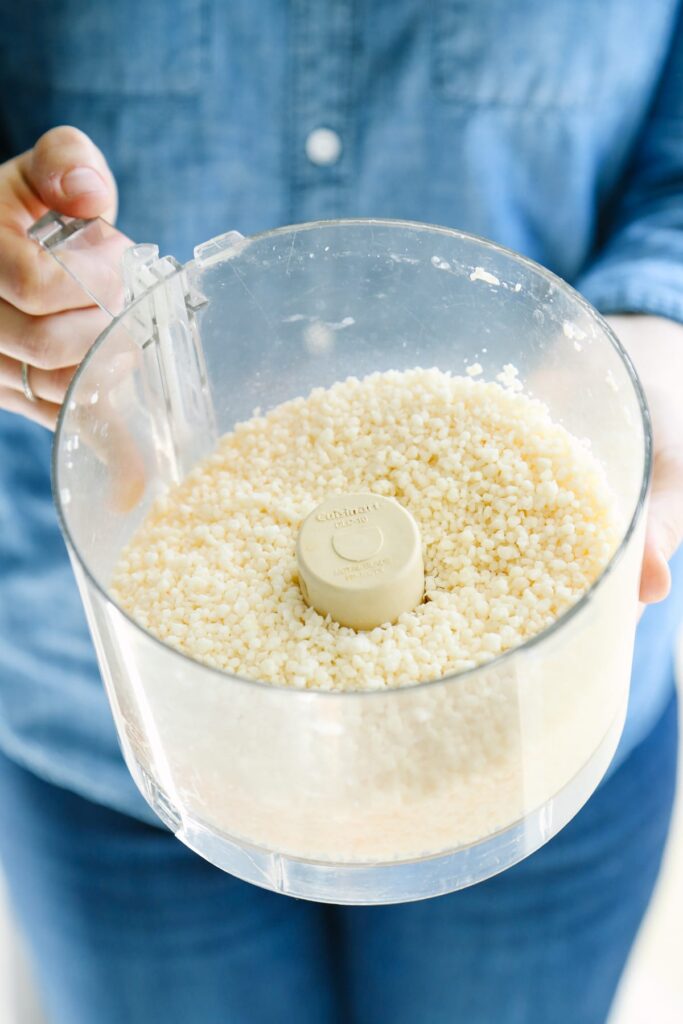
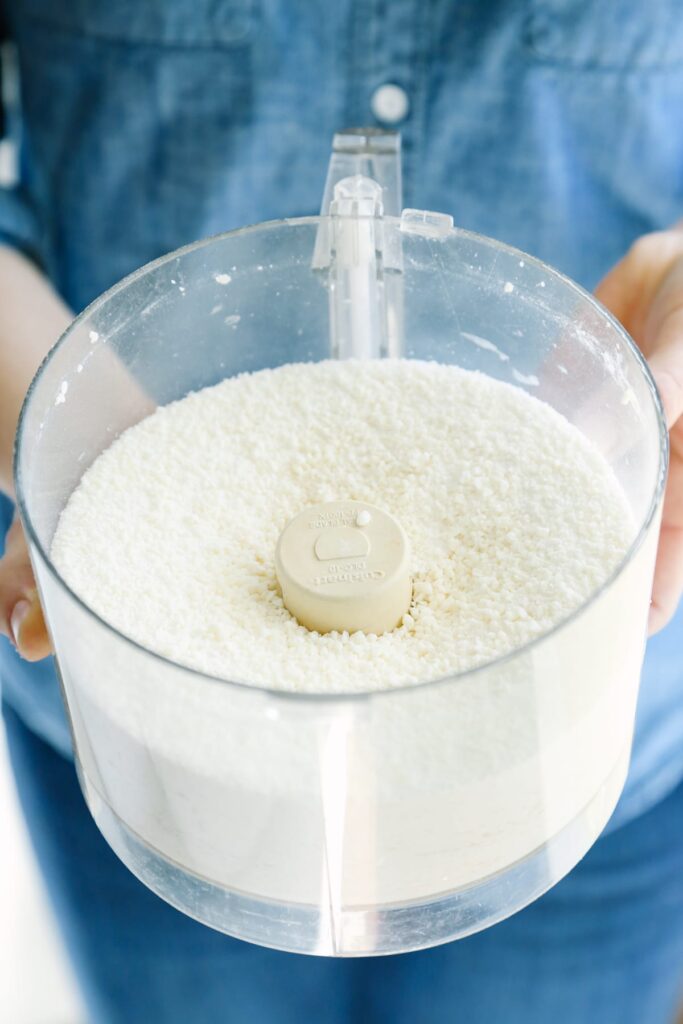
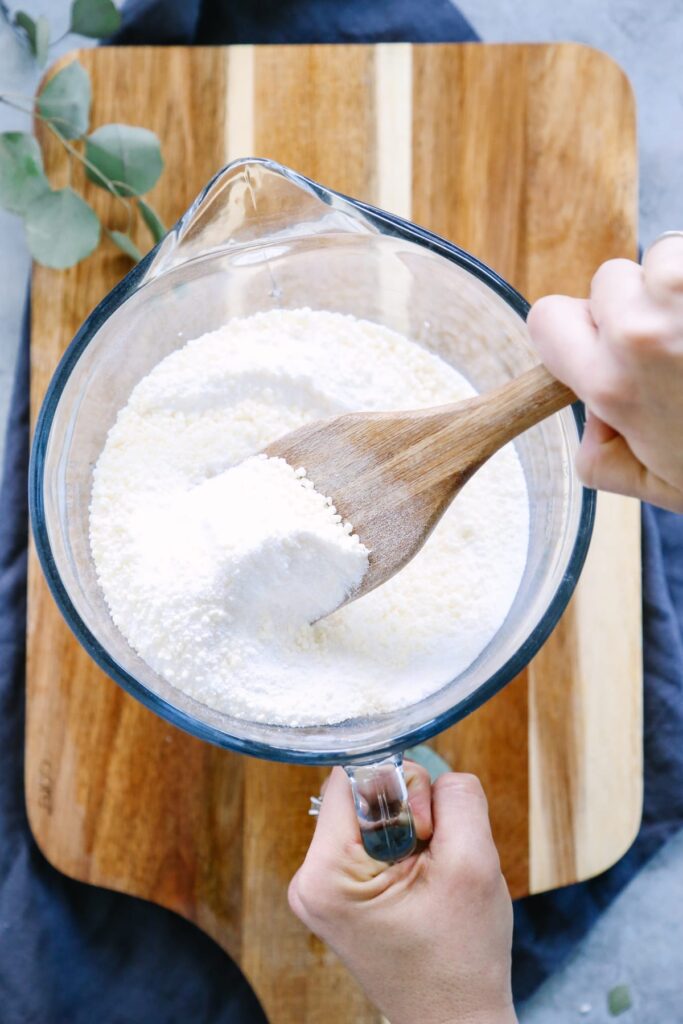
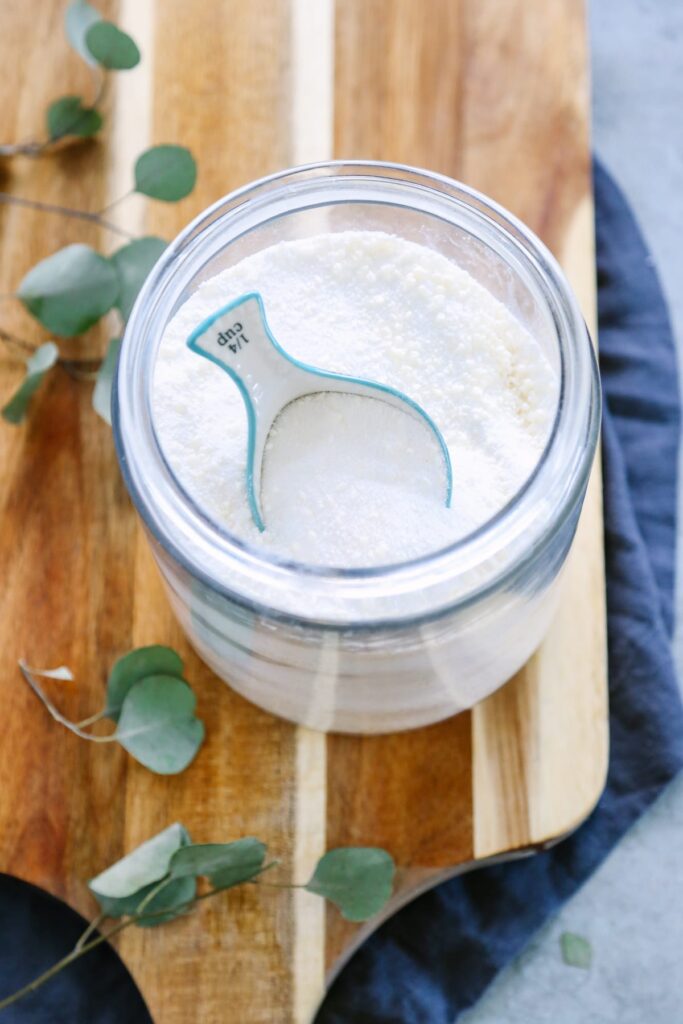
- Step 1 Cut & Grate Soap Bars – Cut the castile soap bars into small slices or chunks using a sharp chef’s knife and cutting board. Place the castile soap pieces in the food processor bowl. Pulse the soap on high until the soap resembles large crumbs (about 1 minute). If you don’t have a food processor, use a cheese grater and a large bowl.
- Step 2 Add Washing Soda & Pulse – Add 3 cups of washing soda to the food processor. Place a towel over the top of the food processor lid and pulse for 1 minute. After pulsing, the ingredients should be well combined. If you don’t have a food processor, stir the washing soda with the grated soap in a large bowl.
- Step 3 Pour Into Storage Container & Add Borax – Pour the combined washing soda and grated soap into a storage container, stir in 2 cups of borax (or seal the lid on the container after adding the borax and shake the container to combine).
- Step 4 Add Fragrance – If desired, add your favorite essential oil or a couple of essential oils to create a custom scent blend. Stir to combine (or shake the container with the lid on).
The detergent is now ready to use. Read on to learn how to use the detergent for the freshest, cleanest laundry.
Watch & Follow My Recipe Video Tutorial
How to Use DIY Laundry Detergent For Top Loaders, Front Loaders, & HE Machines
- For Top-Load Washing Machines – Add ⅛ cup of laundry powder per load directly to the washer basin/drum, then add linens or clothes. Close the lid on the washer and turn on the wash cycle of choice.
- For Front-Loaders and High-Efficiency Washing Machines – Add 1 tablespoon of laundry powder per load to the washer basin/drum, then add linens or clothes. Close the lid on the washer and turn on the wash cycle of choice.
- Adding Fabric Softener – If you want to use fabric softener, add the liquid softener (vinegar is a great option) to the softener compartment of the washing machine. If you’re using a powder softener (like this salt fabric softener), add the powder (and homemade soap) directly to the washer basin/drum, then add fabrics and wash.
What Temperature Water Should I Use?
- Cold Water Setting is Best – Most laundry detergents and soaps require water that is at least 60 degrees Fahrenheit to work (this is true for both homemade and conventional laundry detergents). The good news is that when you use the cold water setting in your washer, it’s usually a mix of hot and cold water. Hence, the water temperature reaches the ideal 60 degrees needed for a detergent to work correctly. For this reason, you can use the cold water setting without issue for both my liquid soap and this powder recipe.
- Colored Fabrics – The cold water setting is always best for colored fabrics.
- Sanitize Sheets & Towels – If you’d like to sanitize sheets, towels, and bed linens, use this laundry powder and the hot water setting.
Storage & Shelf Life
- Store the powder for up to 12 months in a sealed container.
- Store at room temperature.

How to Prevent Soap Residue on Clothes
- Avoid The Laundry Soap Dispenser – Add powder laundry detergent directly to the washing machine basin/drum. Do NOT add the powder to the laundry soap dispenser. Adding the clothes directly to the washing machine and then adding the clothes on top will ensure that water reaches the powder and dissolves it without getting caught in the folds of clothing and linens, which can leave a residue on clothing.
- Try the Laundry Soap Dispenser in Certain Machines- Every washing machine differs. If adding the powder directly to the wash basin/drum isn’t working, try adding the laundry soap to the dispenser. Some machines have a small drawer where you can move from liquid to powder, which is specifically made to help circulate the powder during the wash cycle.
- Soften Hard Water – Castile soap can leave a residue on dark fabrics if you have hard water, even after trying the tricks above. The borax in the recipe helps to soften water and should eliminate residue issues. The case may be hard water if you still have soap residue issues. You can try using an additional water softener (like white vinegar or a salt solution).
Best Essential Oil Blends For a Clean Scent
The best part about this recipe is that you can customize it to create your scent. Essential oils, a natural fragrance, offer a lovely, clean scent without the harsh chemicals and scent additives.
Here are a few of my favorite essential oil combos to create various scents (use 15 drops of each). Of course, you can also use individual essential oils, like lavender, orange, or lemon to create a fresh scent.
- Orange & Lemon
- Eucalyptus & Lemon
- Peppermint & Orange
- Rosemary & Peppermint
- Learn how to use essential oils and make homemade cleaners in this article. And listen to my in-depth podcast about using essential oils safely in the home.
Recipe FAQs
- Can I use the fels-naptha bar instead of the castile soap bar? Yes, you can. Use 2 bars fels naptha bars, grate in the food processor (or use a cheese grater and bowl), then add the remaining ingredients.
- Can I use an ivory soap bar instead of the castile soap? Yes, some recipes online use ivory soap bars instead of castile soap. I haven’t tried this substitution option, but you can test it.
- Can I use baking soda instead of washing soda? No, baking soda and washing soda have two different chemical compositions. You’ll need to use washing soda to make the best product. Washing soda is also called soda ash (source).
- Is it safe to use the same food processor used to make food to grate the soap? Yes, it is. Just wash the food processor well with soap and water after use.
- Does this recipe work with hard water? Yes, it does. See my tips above under “How to Prevent Soap Residue on Clothes” to learn more about hard water and this detergent.
- Does this recipe work in a high-efficiency washer? Yes, it does. Add the soap directly to the washer basin/drum, then add clothes and wash. Use 1 tablespoon of powder per load and the cold water setting.
- Can I make this recipe without borax? For a borax-free laundry powder, make this recipe.

The Best Natural Laundry Detergent Brands: I’ve researched and tried many different laundry soap brands and narrowed down the best 11 brands!
More Natural Products For Clean Laundry
- Stain Remover Spray – Remove tough stains with this simple formula made with castile soap, hydrogen peroxide, and lemon essential oil.
- Wool Dryer Balls – Soften laundry naturally with these easy-to-make wool dryer balls—a great alternative to dryer sheets. Add a few drops of essential oils to boost the scent in the dryer.
- Liquid Laundry Detergent – Combine castile soap, borax, washing soda, and water to make my popular liquid laundry soap.
- Powder Laundry Detergent – Make a powder variation of my popular liquid laundry soap using this simple recipe.
- Laundry Softener – Use vinegar to make this simple liquid laundry detergent.

DIY Homemade Powder Laundry Detergent Recipe
Equipment
- 1 food processor or use a cheese grater and large bowl
- 1 storage container with lid that holds at least 6 cups of dry powder
Ingredients
- 2-5 oz lavender castile soap bars any scent variety or unscented
- 3 cups washing soda also called "soda ash"
- 2 cups borax see notes below for a borax-free recipe
- 30 drops essential oil optional for scent, such as: lavender, peppermint, orange, or lemon
Instructions
- Cut & Grate Soap Bars – Cut the castile soap bars into small slices or chunks using a sharp chef's knife and cutting board. Place the castile soap pieces in the food processor bowl. Pulse the soap on high until the soap resembles large crumbs (about 1 minute). If you don't have a food processor, use a cheese grater and a large bowl.
- Add Washing Soda & Pulse – Add 3 cups of washing soda to the food processor. Place a towel over the top of the food processor lid and pulse for 1 minute. After pulsing, the ingredients should be well combined. If you don't have a food processor, stir the washing soda with the grated soap in a large bowl.
- Pour Into Storage Container & Add Borax – Pour the combined washing soda and grated soap into a storage container, stir in 2 cups of borax (or seal the lid on the container after adding the borax and shake the container to combine).
- Add Fragrance – If desired, add your favorite essential oil or a couple of essential oils to create a custom scent blend. Stir to combine (or shake the container with the lid on).
- The recipe is now ready to use.
Storage:
- Store in a container with a lid for up to 12 months at room temperature.
How to Use:
- For Top-Load Washing Machines – Add ⅛ cup of laundry powder per load directly to the washer basin/drum, then add linens or clothes. Close the lid on the washer and turn on the wash cycle of choice. For Front-Loaders and High-
- Efficiency Washing Machines – Add 1 tablespoon of laundry powder per load to the washer basin/drum, then add linens or clothes. Close the lid on the washer and turn on the wash cycle of choice.
- Pre-Treat Tough Stains – Before washing garments with tough stains, pre-treat the item with my stain remover spray. Then wash with this detergent.
Video
Notes
- For a borax-free laundry powder, make this laundry detergent recipe.
- For more homemade laundry recipes, check out my guide: How to Go Natural in the Laundry Room.

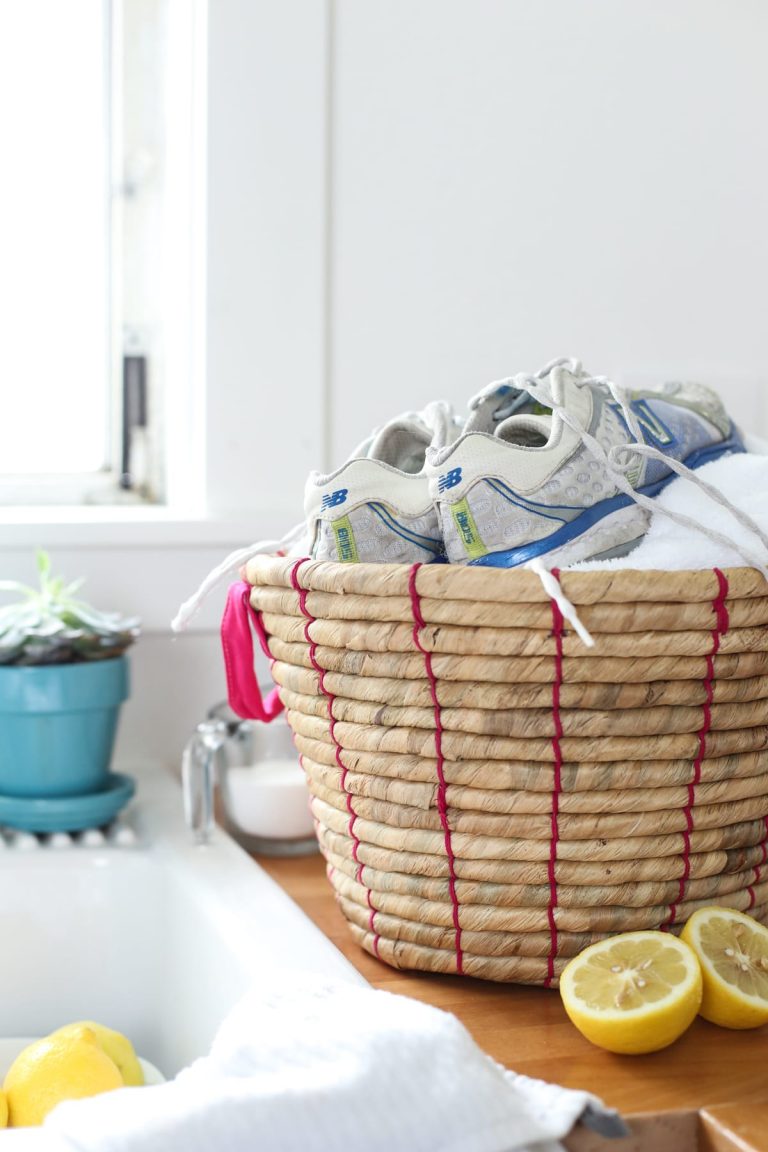
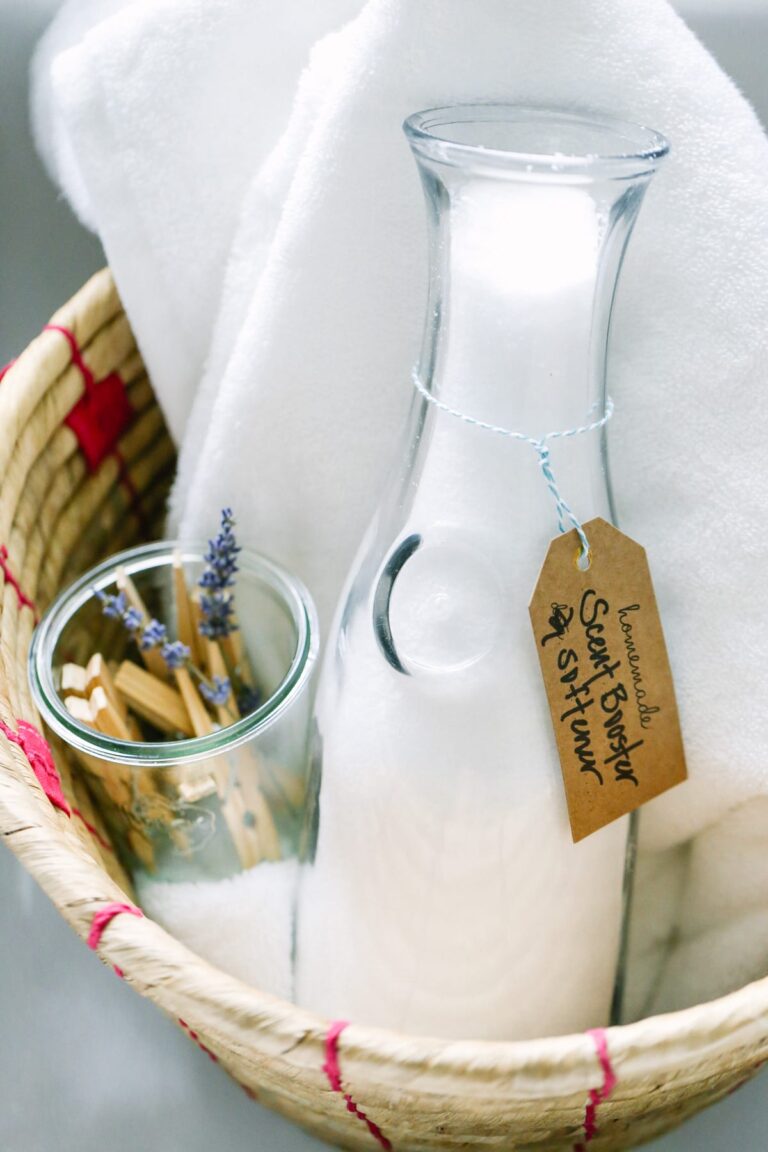

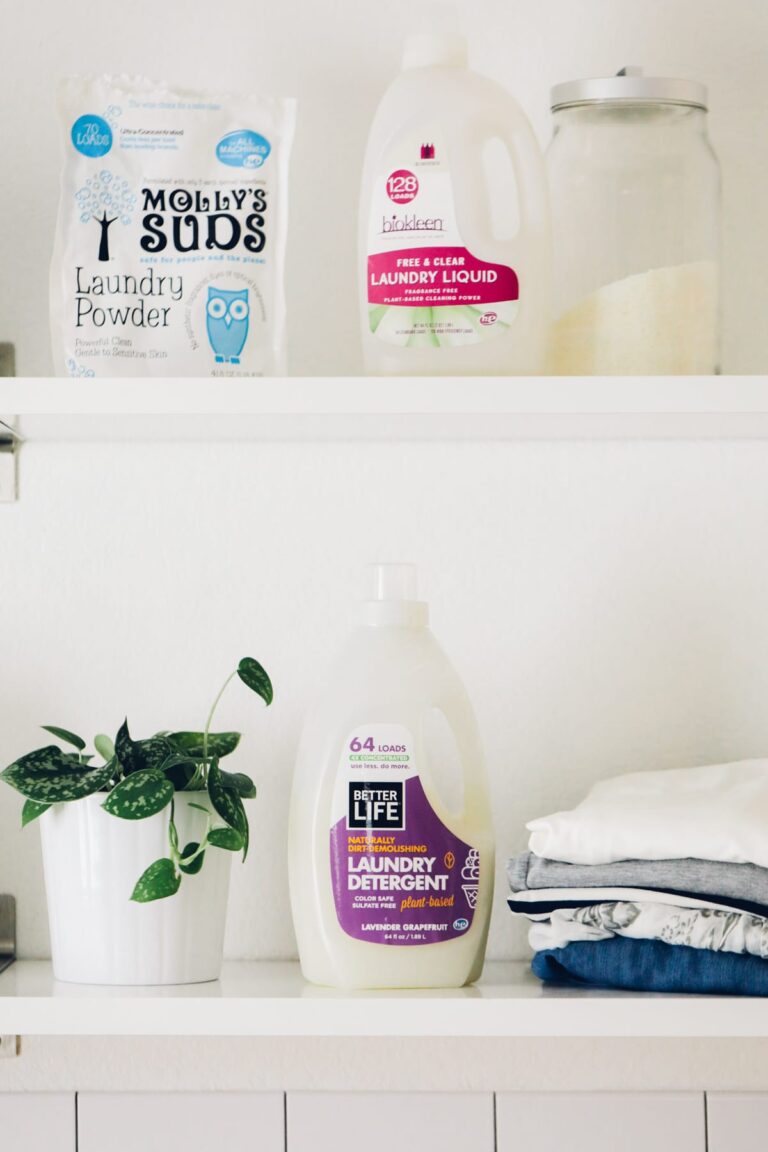
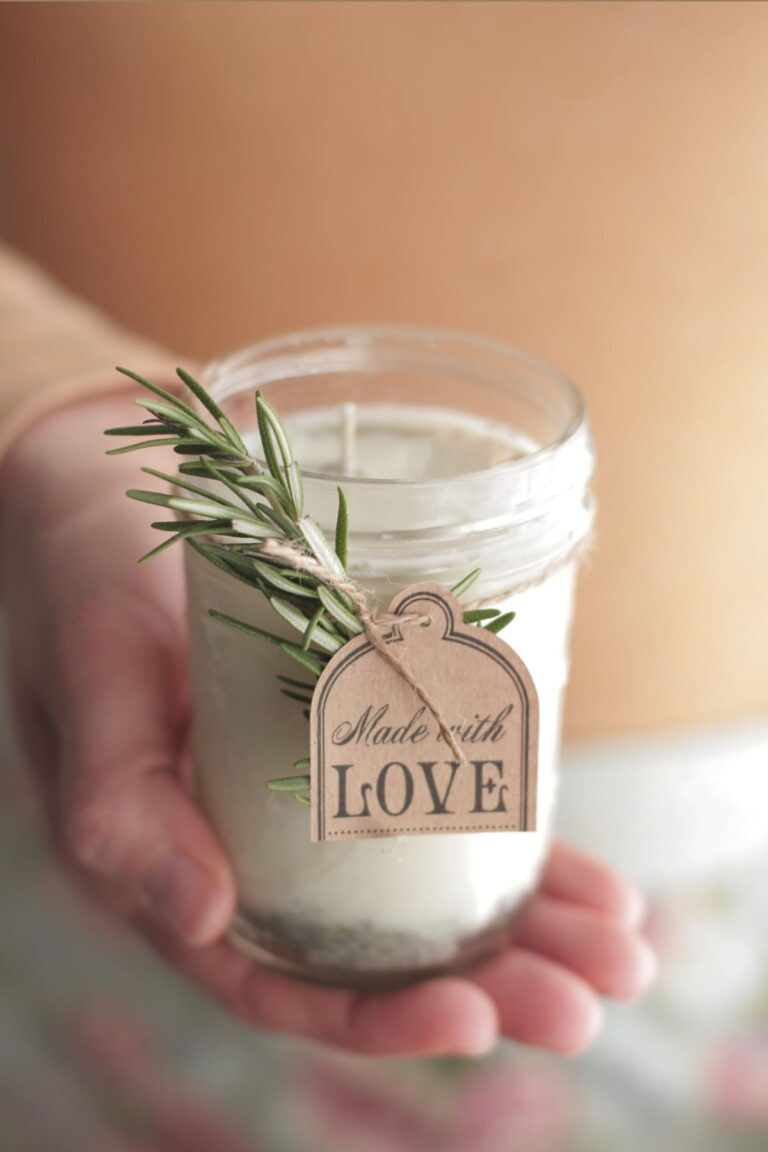
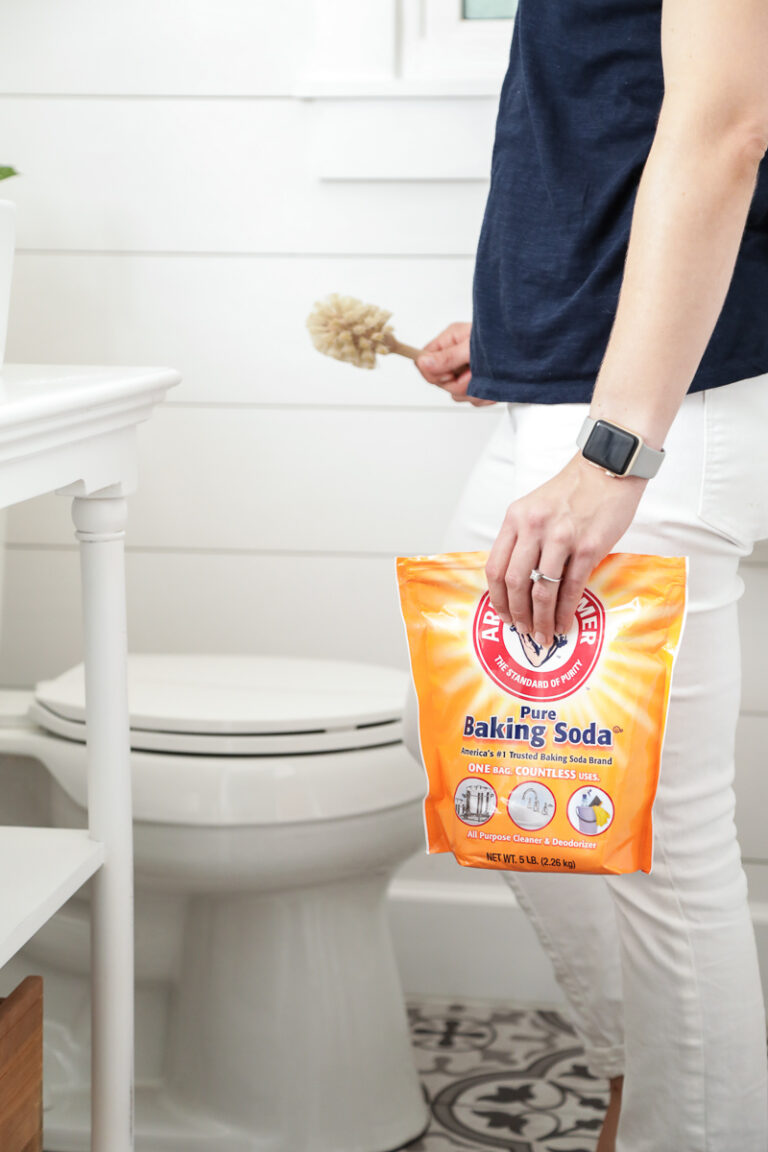
I made my own laundry detergent several years ago and used it for many years (using fels naphtha instead of castile bars). I have a front loader and during that time, I began to notice a strange smell to my laundry, especially the towels and they all became very, very dingy. Even after using store-bought detergent for the last several years I can not get the smell or color fixed. I rarely, if ever, left the clothes wet in the washer and never let wet items sit in the laundry hamper so I know this is not the problem. I have used vinegar, peroxide, essential oils, etc… to no avail. Has anyone else had these similar issues? I do not want to try the homemade route again with the same results!
Hey Penny, I would definitely try the castile bars. I’ve found they clean much better than the fels naphtha bars, and they lend a lovely scent to laundry. Another suggestion is to try washing the clothes in hot water and borax to eliminate the current odors.
I’ve had that even with commercial detergents. I think I had a “cheesy” washer with “green” water saving mode and it just wouldn’t flush/rinse out well due to water conservation. I started to wash a load a week on sanitizing option (extra hot water) when washing towels or whites and the smell went away after a couple months completely.
I had that problem with my front loader, especially in the summer. From what I learned some of them hold an amount of water (to keep the gasket wet?). The only thing that worked with me was using bleach to wash out machine.
How much soap do i use per load seems ok to me thanks
2 TB up to a fourth of a cup depending on what type of washing machine you have.
LS Team
Kristin,
I told you I would let you know how my half-batch turned out. The only word I can use to describe it is “smooth”. It really is a brilliant plan, you know. It’s not that much less expensive than my Biokleen but the laundry just looked & felt nicer. And there were no white flecks on the clothes even though I let the washer swish the detergent about the same amount of time before putting my clothes in.
This recipe is a definite winner & you were absolutely right, 5 minutes & I was done!
Thanks a million!
That’s so great to hear, Carolyn! I’m so glad the half-batch worked well for you.
Yes & I’m ready to make a double batch now!
Awesome, Carolyn!
I absolutely love the dry laundry soap recipe! I have tried it with the washing soda and it just doesn’t get as clean. I used the lavender essential oil and it smells wonderful.
I have a front load washer and only use 1 TT for regular loads and 1 1/2T for larger or more soiled loads.
That’s great, Trisia. I’m so glad you’re enjoying the soap. Thank for sharing your amounts for your front loader.
Just found your blog and I love it! I was wondering what your thoughts are on the Castile bars vs. Fels naphtha. I have been making my own laundry powder with washing powder and borax for several years, except I have been using fels naphtha bars. Need to make more soon and I’m trying to decide if I should try the Castile. Thanks for your thoughts!
Hey Amanda, I’m not very familiar with the ingredients used to make fels naphtha bars, but I am very comfortable with castile soap. Castile soap is definitely what I recommend.
Hi Kristin, I am anxious to try the recipe. Are the amounts critical? I’d like to try with a half-batch first, just to make sure it works okay with our machine, water & the hubbs. Thanks!
Hey Carolyn, I’d recommend sticking with the same ratios, and cutting everything in half. Let me know how it goes!
I want to start by saying I LOVE your blog and routinely incorporate your diy recipes in my daily life with personal care and cleaning.
I loved your liquid laundry soap but thought I’d give this one a try for a longer shelf life. Do you know which of the two recipes are better for your washing machine as I’ve read mixed reviews regarding borax and castile soap in regards to build up in the piping?
Hey Megan, Thank you! I’m so glad you’re enjoying the blog, and the recipes. I’ve found that both have been fine with our pipes. I use warm/hot water with the powder, so I think that may help keep the pipes from clogging. Since the liquid dissolves the castile and borax ahead of time, cold water is fine. Washing soda can also be a big issue with hardening in cold water, so that’s another reason to use warm/hot water.
Awesome. thank you for the insight! Can’t wait to make this and the laundry tabs I saw you posted on Facebook and see which I like most! Not a bad thing when you’re looking forward to laundry again haha
Lol, not a bad thing at all. That’s awesome, Megan!
Hi Kristin
Looking to make this laundry powder but concerned about using my blender to mix up the ingredients. I don’t have a food processor – just a Vitamix – will this be ok ? Also concerned that it will wash properly afterwards as I will need to use for food afterwards. Is this recommend ?
Hey Jane, My only concern with using a blender is with the soap getting stuck at the bottom of the blender. I recommend grating the soap with a cheese grater, and then mixing the ingredients by hand.
Hi ladies, awesome information. I am trying to find a good natural laundry soap. I have tried Norwex but it is a bit spendy. Is their any difference in the results between your liquid gel soap and your powder soap? Just trying to decide which to try. We are on a septic tank and I see someone had issues with this – not sure if it would be worse than mainstream detergents to be honest so am willing to give it a whirl 🙂
Hey Liz, The biggest difference between the dry powder and liquid soap is the way they are used. The dry powder really needs to be used in hot/warm water, and the liquid soap may be used in cold water. The powder soap also has a longer shelf life, since water isn’t involved the process (water can/will breed bacteria over time). Other than those things, it’s just a matter of personal preference.
I’ve been making my own laundry soap with these ingredients for about 3 yrs now. I just made my 3rd batch using 1 box borax, 1 box washing soda, and 2 bars castile soap and I use a tablespoon per load. The last batch I made in September 2013 so it lasts a long time! I have used this recipe in a top loader, front loader, and at the laundry mat (just this morning!) and have had no problems. I cannot believe I used to pay soooooo much for laundry soap. 🙂
I just found your site and LOVE it, so amazing. I have a HE front load washing machine, with this soap should I put it in the detergent spot or place a scoop of it in the drum of the machine. I have only ever used liquid in my front loader so i am not sure where the powder kind would go.
Thanks!
Usually you just put it in the detergent cup. I try and put it as far back as I can so the water gets it all.
My husband is a mechanic. Does anyone have any ideas if this or something else will work? I can’t seem to find an alternative to Tide which I want him to stop using. Sigh….
I say yes! My husband and I worked as aircraft mechanics where we got covered in jet fuel and oil everyday and I used this soap. 🙂 It’s worth a try for sure!
Thank you for sharing, Melissa! That’s awesome!
Just wondering if anyone had experience with using this kind of soap with hard water? Will that make any difference?
Hey Heather, We have very hard water. The washing soda in this recipe helps to soften the water. You could also add 1-2 cups of kosher salt to the recipe–I’ve done that in the past with good success. The salt also helps to soften the water.
This sounds great I too have moved from making liquid laundry soap. One day I ran out got too busy and just added in borax, washing soda, and a few drops of sal suds. Now I just add the two powders a cup each together in a glass jar and use 1/4C to my laundry. With the few drops of sal suds works better then any store brand.
That’s awesome, Tanisha!
I, too, make my own laundry detergent, and I recently switched from liquid to powder. I don’t use Borax in mine, since it really is best in hot water, which I don’t use often, but instead add just a little, as in a teaspoon or so, Rid-X septic tank treatment (the powder kind). The enzymes seem to help lift some of those tougher stains. I also make my own 100% coconut soap specifically for use in laundry, because it is so cleansing. I find I get better results if I grate the soap first, rather than use the food processor. I then put everything in the food processor at once. I put in a few drops of eucalyptus and lavender to deter bedbugs and dust mites and make everything smell fresh. It is really awesome soap, rinses clean, and gets most of the grubby stains out of our clothes. If I need to pre-treat, I confess to using Dawn dish soap (the blue kind), water, and ammonia in equal amounts. Probably not the most environmentally friendly concoction, but I am dealing with serious ground in dirt and grease sometimes, as I have a 13 year old boy and a husband who works in construction and on machinery. I haven’t found anything else that works except Goo-gone, which I no longer use. I actually think the powder does a better job than the liquid!
Do you have a recipe for your laundry detergent thst works well for cold water? I try to wash everything clothes except sheets towels and underwear
😉
hi! I’ve enjoyed reading several of your posts and recipes today. I’ve been using my homemade laundry powder for a year but have found that it doesn’t whiten whites very well. does your recipe brighten? my sister noticed when she started making my recipe, and living on a farm I have come to accept whites not being as bright as (your preciously favorite chemical “T”-word addiction).:/ but of COURSE, I would prefer whiter whites, too!
Hey Margaret, I’m so glad you’re enjoying the blog. I’ve been using homemade soap on and off (supplemented at times with a “more natural” store-bought soap) for so long that I can’t really say if the whites are different than my Tide days. One thing I know that really does help is adding hydrogen peroxide to the wash to make an oxi-clean like product. Here’s my recipe: https://livesimply.me/2015/08/13/homemade-oxi-clean-like-laundry-booster/. Another option is to use my bleach alternative when the whites are looking a bit dingy: https://livesimply.me/2015/07/19/homemade-bleach-alternative-3-ingredient-whitening-solution/.
Have you tried the recipe with cold water? And if I have soap flakes would that work to?
Thanks!
Sandy
Hey Sandy, I’m not 100% sure about soap flakes as a replacement. If they are anything like castile soap (a concentrated plant-based soap), I think they will work.
I’ve found the washing soda really needs warm or hot water to fully dissolve in the wash. When I’ve used cold water, the results have been mixed. Sometimes a powder is left behind on some clothes, which I believe is caused by the washing soda (not fully dissolving) and cold water (based on other experiments with washing soda in my kitchen). My liquid laundry soap works very well in cold water: https://livesimply.me/2014/02/11/homemade-liquid-laundry-soap-all-natural-detergent/.
Thank you for the printer friendly version. . Also, thank you for actually doing research and testing. I appreciate facts backed by the science and I am on board with a blog that posts their research sources.
Hey Ronda, I’m so glad you’re enjoying the recipes, and the printer-friendly version. Enjoy!
I make most of my own natural cleaners, but haven’t taken the plunge with laundry detergent yet. This looks great! (And so easy!). Does it work in HE machines?
Thanks!
-Jen
http://www.asipofbliss.com
Hey Jen, Yes, it should. Be sure to use the smaller amount called for in the recipe when adding the soap to your washer.
It does! I use HE machines. Just use about half as much- I use about 1 to 1 1/2 tablespoons per load, and it seems to do the job.
Awesome, Sheila! Thank you for sharing!
These are low-sudsing soaps, so it is fine. I use 1 tblsp. in my front loading HE machine and it works great.
Hi Kristin, do you have a top or front loader. How does it work with the front loader if you know.
Hey Vicki, I have a top-loader, but from our test group for the book, a few people tested this out in a front-loader and were happy with the results. The soap amount is greatly reduced for the front-loader machine.
Any suggestions if you don’t have a food processor?
Hey Lauren, I suggest using a cheese grater :).
Hi,
Do you have a recipe for laundry detergent pods? I absolutely love your recipes!
Hi Macy,
Kristin doesn’t have a pods recipe but she does have a few different laundry soap recipes.
Here they are: https://livesimply.me/homemade-liquid-laundry-soap-all-natural-detergent/
https://livesimply.me/no-borax-homemade-powder-laundry-soap-with-natural-fabric-softener/
LS Team.
Simply grate the soap bars, it’s not hard once you get the feel of it. My five year old actually loves doing the job of grating the soap bars, it is a rather satisfying job.
I grate the bars while watching TV or as a fun activity for my child and I to do together maybe while listening to music or an audio book to help distract and get into a meditative rhythm. It goes pretty quickly. It’s very enriching for a small child to help make the detergent his family’s clothes are washed with too. I can see the accomplishment on his face as he realizes he has contributed to the family’s well being. I can imagine a child of any age could enjoy the activity.
Does the lavender oil stain your clothes? I’ve heard that certain types of oils can stain clothing.
Hi Macy, a pure essential oil shouldn’t leave stains on your clothes but a carrier oil will.
LS Team.
I grated my soap bar and just stirred it all up. I don’t have a food processor. I’ve read others talk about using a high powered blender. I would just do a little at a time and see how yours handles that.